Takashi Miike is a prominent Japanese director whose work has earned him cult status throughout the years. In his lengthy and successful career, he has worked on over a hundred films. The finest aspect is the breadth of his work; he’s done everything from gruesomely violent films to family-friendly fare.
Although the prolific director has directed several terrible and unpleasant films, it would be incorrect to argue that his work is melancholy. In fact, there have been moments when we’ve considered dubbing him a “feel-good” director! His unfettered portrayals of brutality, his use of hard-hitting black comedy, and his use of cheerful nihilism set him apart from other directors.
His films have sparked several debates due to stunning scenes of terrible violence and sexual perversion. Audition and Ichi the Killer are not for the faint of heart, and the audience was given barf bags to handle the unfathomable gore during the international premiere of the latter.
However, there is no question about his legacy, as his work has appealed to both popular and art-house audiences. We’ve compiled twelve of his masterpieces in one film to provide you with an outstanding cinematic experience.
IMPRINT (2006)
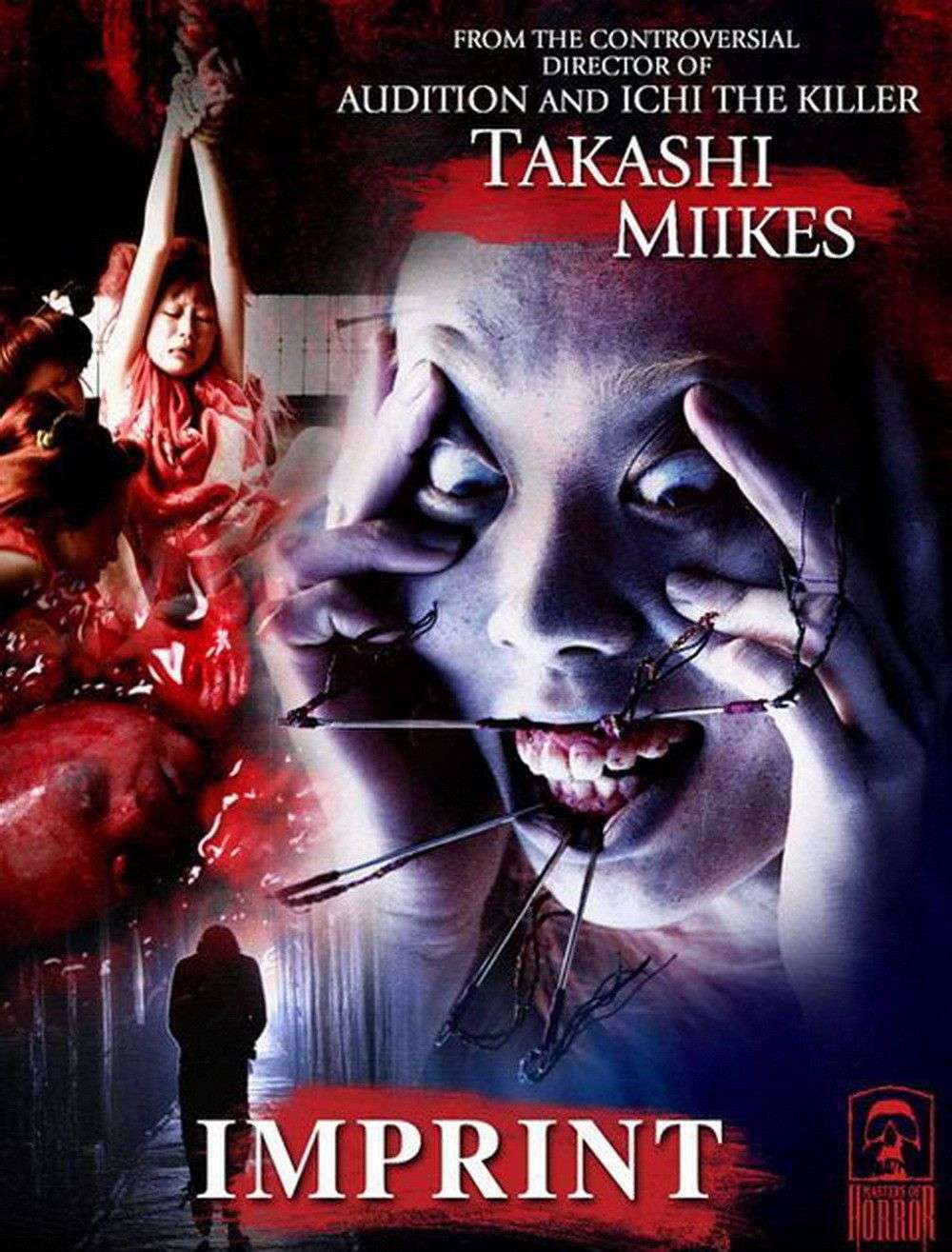
Do you recall the horror anthology series Masters of Horror on television? This was the twelfth episode of the first season, and because of its graphic material, it was delayed for a long time. The story takes place in the mid-nineteenth century, when Christopher, a young American journalist, goes to Japan in search of the Japanese prostitute he once loved.
He had pledged to return to her after all these years, but he had never done so. His search leads him to a distant island off the shore, where a deformed prostitute tells him all about her life and his lady love! This is the start of a story filled with agonising agony and cruelty that will leave you feeling uncomfortable.
Once you watch this movie, you will understand why it was banned from American TV. It is easily one of the most disturbing things you will see, and it is clear that Miike has a clear disregard for the limitations placed on TV content! The torture sequences are hard to handle, and the perverted sub-themes are simply too explicit.
Some scenes are so disturbing that they verge on sickening, and the story that will leave you scarred long after the credits roll. We can never get over the gruesome and detailed abortion sequence or the part where a girl’s fingers and gums are used as a pin-cushion.
The underrated actor Billy Drago, who plays the mysterious American journalist, has done a fabulous job in this movie, and the sublime camera-work ensures the disturbing aesthetics. The climactic twist will simultaneously surprise and disgust. Do not let the broken English stop you from basking in the haunting atmosphere Miikeuses to realise this endearing tale!
Ichi the Killer (2001)
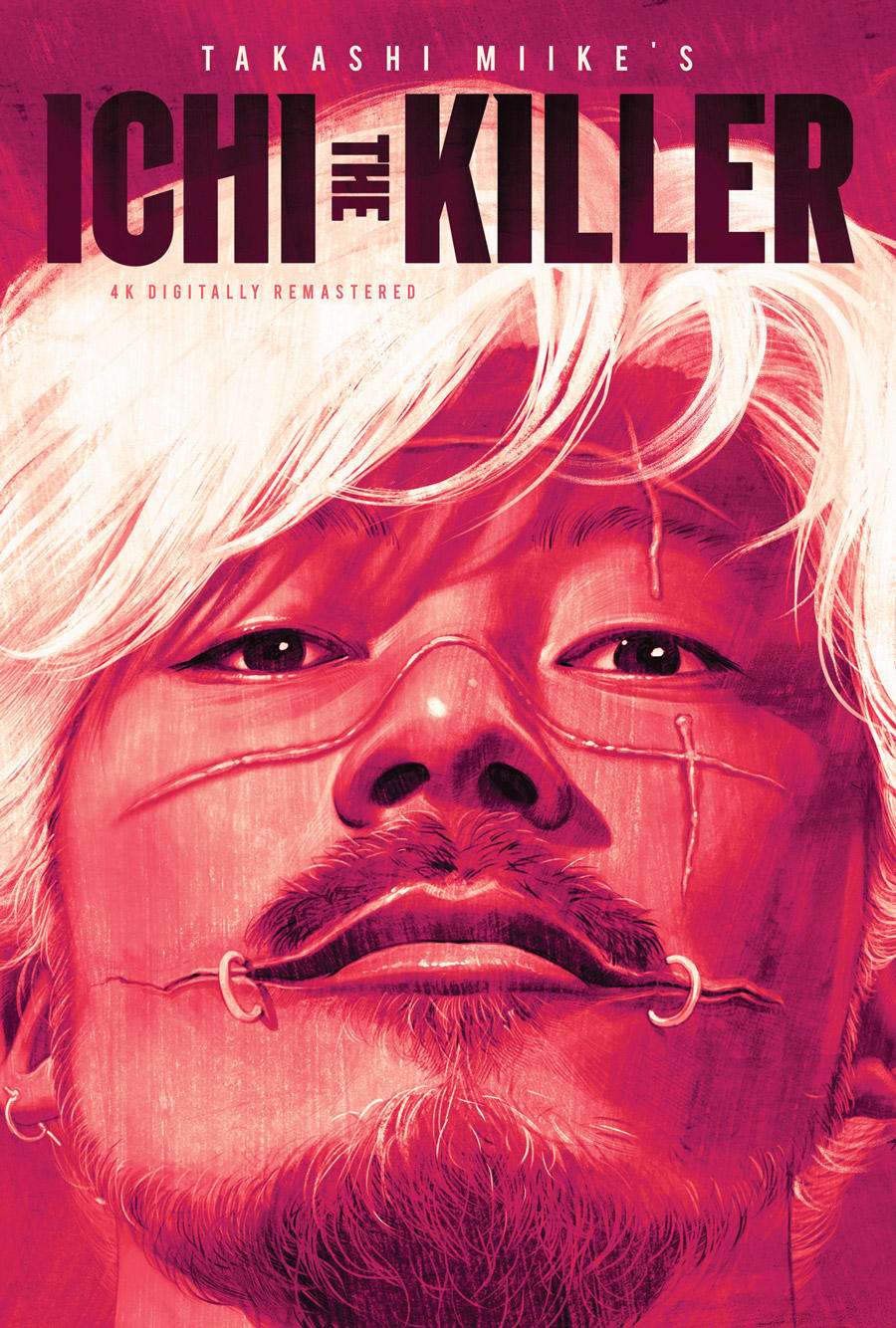
Anjo, a Yakuza boss, goes missing with 300 million yen, prompting his gang colleagues to conduct a huge manhunt. The quest for the sadomasochistic Kakihara quickly turns violent. The gang even manages to apprehend a rival Yakuza member, only to discover that they have been torturing the wrong man for information.
Their investigation takes them to Ichi, a sexually repressed young guy with exceptional martial arts talents. Kakihara tries everything he can to get his hands on Ichi and his handler as Ichi proceeds to take out the gang members one by one.
The mysterious Ichi is a psychopathic killer as a result of his troubled past, and things boil down to a gritty climax when the ultra-violent killer meets the pain-craving Kakihara!
The film is based on the popular manga by Yamamoto and is an intriguing mix of dark humor and sadistic violence. Ichi is one of the most complicated characters that you will come across. He displays strange behavior, crying and cowering before attacking his victims.
This mysterious figure attacks with razor-sharp blades that are strapped to his boot, slicinghis enemies into bloody pieces. The sexual dysfunction which is a part of his violence is also unique. The director carefully avoided turning the character into an admirable vigilante, framing him instead as an anti-hero.
While Miike maintained true to the original manga, he changed some parts of Kakihara’s persona for the film, converting the frightening, middle-aged man from the comic into an attractive young man. He did, however, keep Kakihara’s piercings and facial scars. The performance is unexpectedly good, and we were taken aback by the abstract climax, which left us feeling unsettled.
This movie was banned in many countries like Germany and Malaysia because of its extreme violence and cruelty. However, it still developed a cult-following over the years and is a must-watch if you want to explore the brilliance of this veteran director.
IZO (2004)
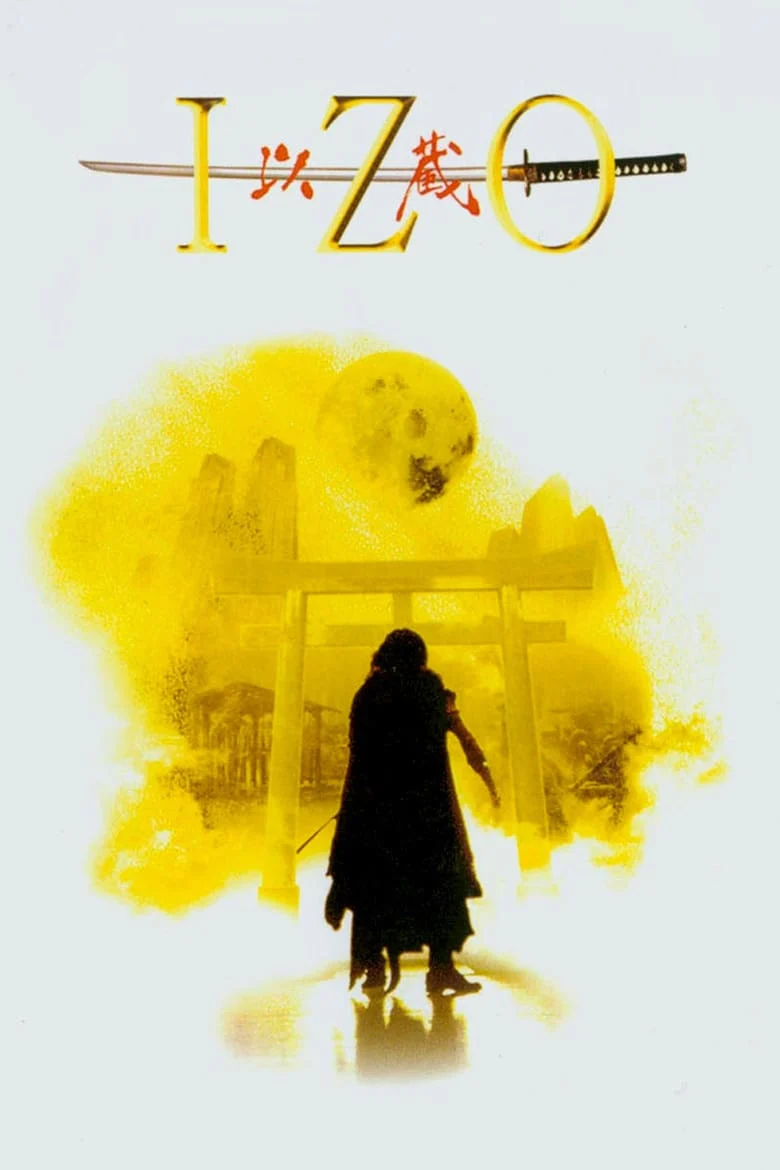
Izo was a historical samurai and assassin who was tortured and executed in feudal Japan. Instead of having his soul annihilated, Izo’s fury propels him into the space-time continuum. He lands in modern-day Tokyo and immediately empathises with the city’s homeless population.
He is a lethal killing machine because to his polished combat skills, and he is still outraged by the horrendous abuse he received in the past. He runs into past enemies who still have a vengeance against him. Is he going to get his vengeance this time?
It is easy to misunderstand this is an action-packed sci-fi drama, but the movie signifies so much more! The film takes on deep philosophical questions like the origin of religion, ethics, and law and offers a rough nihilistic answer to each of them.
Izo encounters various kinds of strange metaphoric characters, and his murderous violence sees them sliced up with his samurai sword. It is fair to suggest that the movie is almost an elaborate thesis on mankind, although the exact message in the narrative is debatable. Those who are familiar with the works of Takashi Miikewill be aware of the tendency of the director to deliver cinematic violence and sexuality in such a way that the audience is almost made to feel like a sadist.
There are some innovative action sequences to spice things up, and the action occasionally stops for some soulful music. Every scenario is artistically justifiable because of the meaning. This dynamic work of art deserves to be regarded as one of Miike’s finest works, as it may be the closest you will approach to understanding his socio-political beliefs.
Three… Extremes: – Miike Directed the third Segment called The Box!

This film followed in the footsteps of its predecessor, Three, by presenting pieces of a riveting horror anthology. Takashi Mike helmed the third segment, Box, which featured the creepiest story of the bunch. The story centred around Kyoko, a young novelist who had previously worked as a circus performer.
She used to work in the circus with her twin sister Shoko and their sponsor Higata when she was younger. However, she became obsessed with the idea that Higata preferred Shoko, and her jealousy drove her to confine Shoko to a box.
She then lit the box on fire by mistake, and she is now plagued with remorse and dreams over her heinous crime. When life takes her back to the circus one more time, a nasty surprise awaits her! The twist at the end of the story will change your perceptions entirely!
This movie was a treat for horror fans, and each segment was like the perfect dissertation on spooky stories. Whilst the other two stories, titled Dumplings and Cut were pretty impressive, Box certainly had the edge, with its lavish sets and costumes. It is more of an artistic endeavor, and you won’t be able to look away from the screen for a single moment.
Yes, there could have been more explanation in the plot, butthat’s not how Takashi Mike operates! The concept of terrifying nightmares becoming a reality makes for an intelligent project, and the clever twist that complicates the boundaries of reality and imagination makesthe film all the more enticing.
The psycho-sexual aspect in the story proved most unsettling. Just how much of Kyoko’s visions are real, and how much is a dream? You have to watch this fine specimen of horror anthology to get the answers!
As The Gods Will (2014)
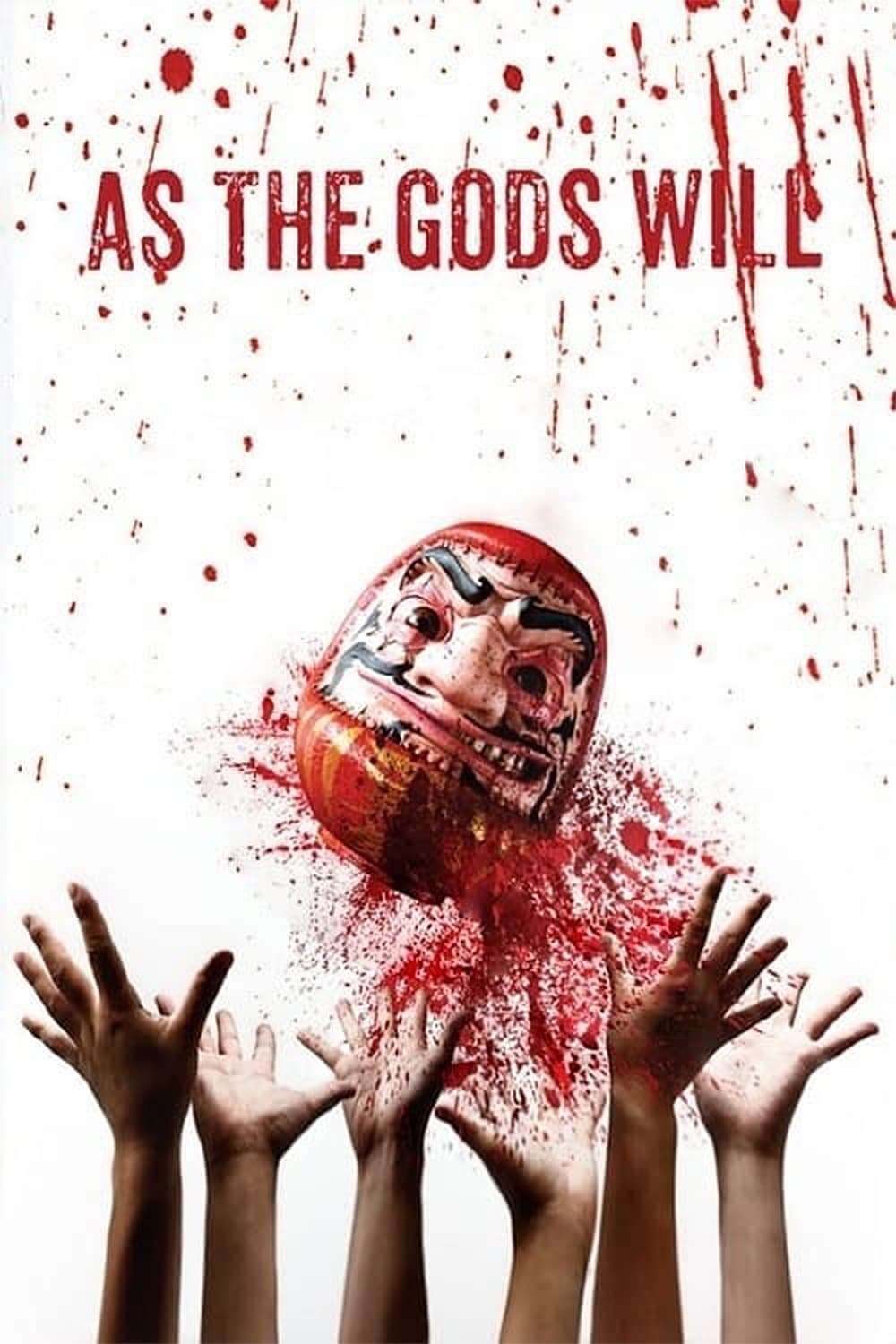
Shun Takahata is an ordinary high school student whose life is turned upside down in an instant. He realises that he is a member of a group of pupils who are compelled to play a series of games in which failure results in death.
He has no idea who is putting the games together, but he needs to keep winning in order to survive and protect Ichika, a childhood friend. The mystery game of death worsens, and Takeru, one of their classmates, appears to relish the opportunity to kill other pupils through the games. Will Takahata and his friend survive the final rounds of the game of death?
This supernatural horror flick is based on a manga series of the same name, and Takashi Miike embraced the challenge as only he can. The end result is a fascinating narrative with some occasional dark humor thrown in. It is a gory live action version of the manga, and it mostly stays true to the source material.
As you would expect, there are a couple of gruesome sequences that are signature Miike, and the philosophical elements are omnipresent throughout the plot. Besides the gore, the social commentary and ironies will keep you hooked into the story. The film’s tone shifts unexpectedly throughout: from times of serenity and stillness, you’re abruptly thrust into something far more explicit.
The magnificence of the cinematography and colour schemes used in this film cannot be overstated. The acting is arguably the only flaw in the film, despite the fact that the primary characters were all rather good. This creepy and entertaining movie will restore your faith in the art of filmmaking!
Fudoh: The New Generation
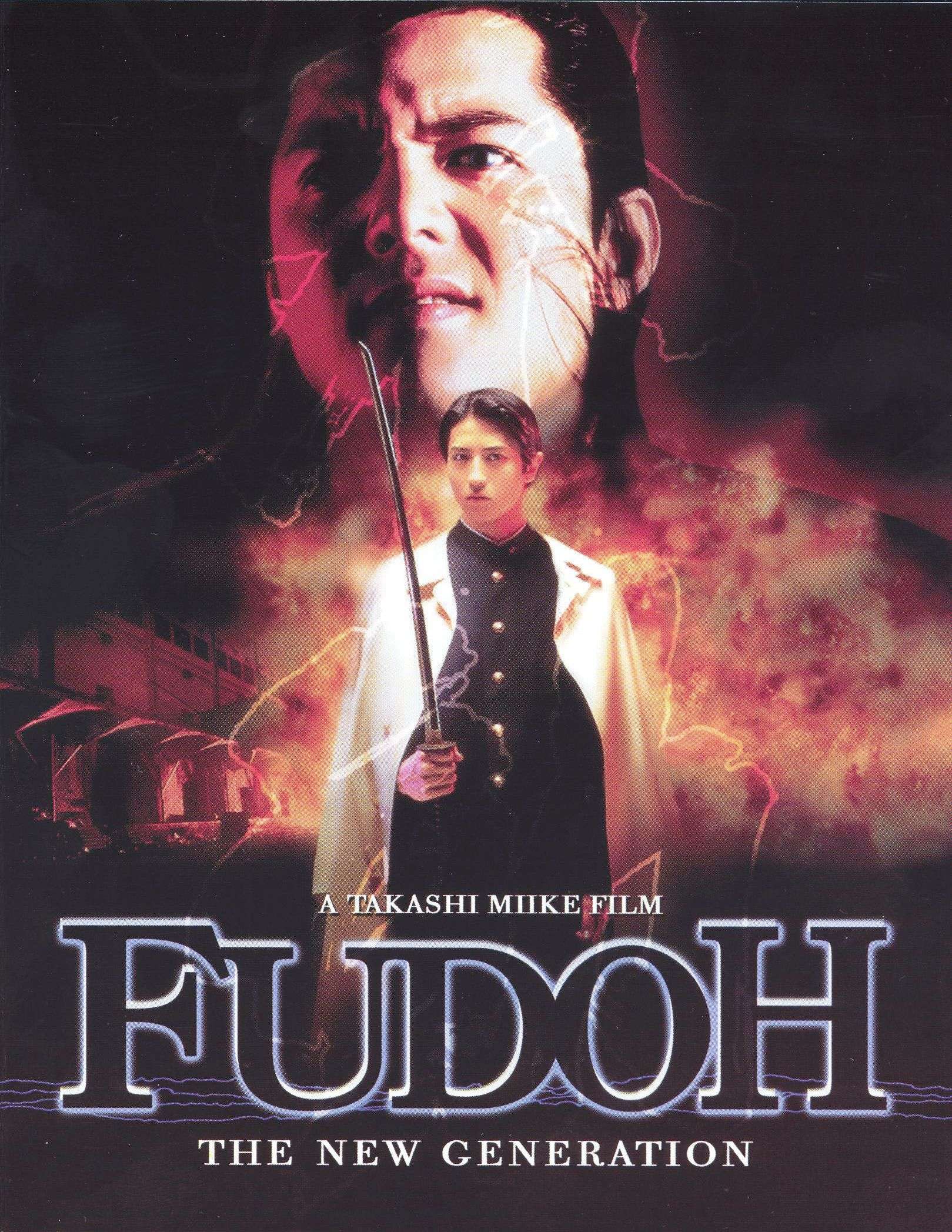
RikiFudoh manages to have two lives: one as a high school student and the other as the leader of an organised crime group. He has his own team of teenage assassins, who are equipped with cutting-edge weapons and are tasked with gaining control of the underground. Fudoh, on the other hand, isn’t looking for power; he’s out for vengeance.
His opponent is none other than his own father, who murdered Fudoh’s older brother to settle a feud many years before. Riki begins an assassination campaign against his father’s gang’s key members, with his father as the final target. Who will emerge victorious in the clash between father and son?
This film is regarded as one of Takashi Miike’s masterpieces, and for a good reason. This is one of the movies that introduced his expertise to the Western audience, and since then, the floodgates have opened for him in terms of opportunities.
The narrative is over-the-top in some parts, but overall, it maintains originality and seriousness. The clever use of symbolism makes the narrative very interesting, and the action-packed plot also explores the sensitive relationship between two men who cannot change their violent natures.
They are lethal enemies, but at the same time, they share many qualities. The story also dives into the human psyche; the horrifying side of it. We loved the dynamic climax, whichdefines the theme of the movie pretty effectively. There is a lot of violence, and the assassination scenes are shockingly brutal.
The concept of little children being trained to become ruthless killers is somewhat exploitative and can be off-putting for some viewers. However, if you can brave the harsh bits, this is a gem of a movie that must be on your watch list!
THE GREAT YOKAI WAR (2005)

After his parents’ divorce, a little kid is distressed by his tumultuous family life. He settles down in a little village and finds himself in the midst of a massive spirit conflict. He is chosen as the Kirin Rider, the defender of all good things, and is forced to join forces with the friendly ancient Yokai spirits in an apocalyptic battle against the bad spirits.
The majority of the spirits and animals are based on Japanese folklore, and the young boy must struggle to protect the good spirits and free the world from the evil ones’ oppression. Will he be able to live up to his title?
The talented Takashi Miike unleashes the best of his imagination for this movie, presenting an adorable tale of a young boy turned world savior. This is one of his very first family films, and it somewhat comes across as a fairy tale.
The elements of darkness and cynicism present in Miike’s other movies have been kept to a bare minimum here, and the director made good use of a decent budget, buying in some quality CGI to realise the creatures. However, expecting something as smooth as a Hollywood-style spectacular, would be unrealistic.
This is no simple chore, as the monsters range from cheesy to amazing, and there are hundreds of them on screen. This film has some direct references and serves as a tribute to the works of Shigeru Mizuki, the manga artist responsible for bringing the tradition of yokai tales into the modern comic-book medium. The critics of Takashi Mike, who called him a one-trick pony, were silenced with this fascinating project.
The cartoonish vibe in the production is hard to miss – it will remind you of Miyazaki in certain places. While the plot might seem predictable, there are surprising twists and turns that will keep you on the edge of your seat.
There are some truly frightening images, though Miike strongly believed that the kids could handle that much fear. If you want to witness the other side of this fascinating director, the side that shies away from shocking violence and delivers entertaining, kid-friendly content, this movie is the one to go for!
13 Assassins (2010)
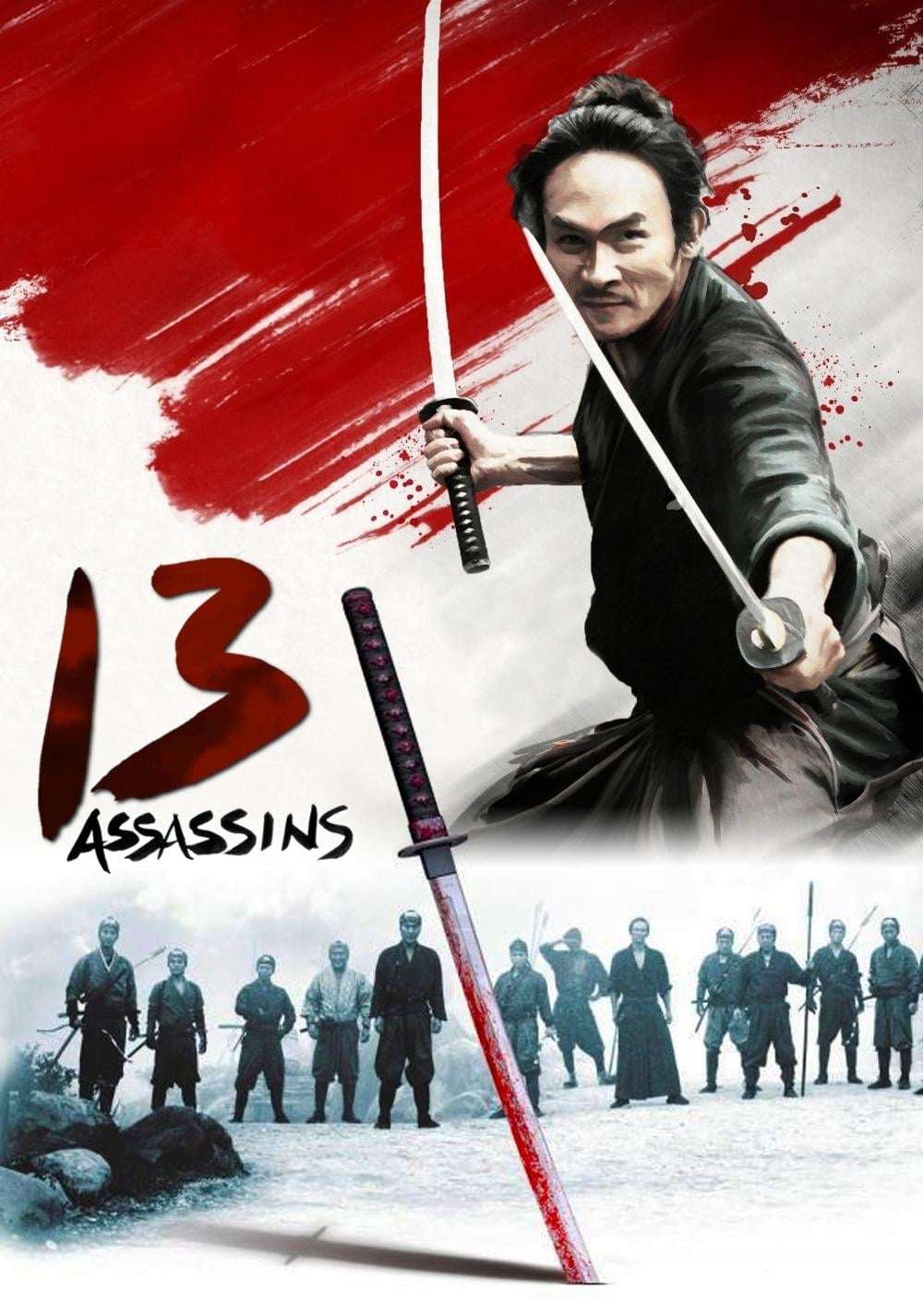
This film is set in feudal Japan, where an evil ruler named NaritsuguMatsudaira has tormented and oppressed the people. Shinzaemon Shimada, the head of the Namiya clan, is asked by a tortured woman to kill the tyrant ruler. Naritsugu had removed her limbs, legs, and tongue, and the samurai warrior is affected as she writes with her forearm demanding justice.
This movie is a remake of the 1963 version of the same story, which was based on historical events. Naritsugu was a real historical figure and was the lord of a region in the Kansai area of Japan. Takashi Miike takes on the Samurai genre effortlessly, and this turned out to be yet another masterpiece from the veteran director.
The narrative is full of interesting characters, but there is a simplistic touch to the story that makes things easy to comprehend. This picture is a fine example of how Miike can combine elements of a mainstream flick and a cult hit. There are trademark instances of violence too, in the bizarre, sadistic fetishes of the evil lord, and the gore is often shocking and unexpected.
The storyline never loses track of the Samurai ideals and their duties, and the director continues to push his messages throughout the movie. A special mention must go to the cast, which featured some of the biggest names in Japanese cinema. Even the supporting cast delivered flawless performances.
The cinematography, particularly in the forest parts, is magnificent. The battle lasts about 45 minutes and is easily one of the best Samurai fights we’ve ever seen on TV. Overall, it’s an action-packed thrill ride with all the ingredients for a blockbuster.
Audition (1999)
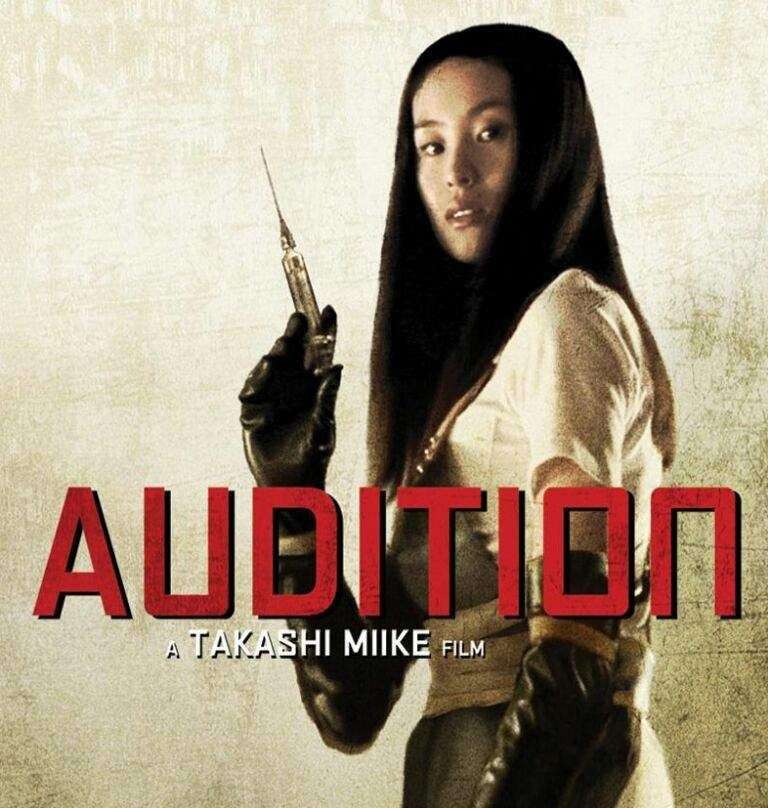
Shigeharu Aoyama is a widower who has raised his son alone ever since his wife passed away. After years of mourning the loss of his wife, he accepts to his son’s recommendation that he remarry. He, on the other hand, feels himself too shy to approach ladies and devises a novel method of finding a new spouse.
A producer friend of Aoyama’s assists him in staging a phoney audition so that he can screen various women. Aoyama develops a crush on Asami Yamazaki, but he is unaware of the deadly secret she is concealing. An unknown side to her character will bring unthinkable doom into their life!
This is Takashi Miike at his finest as the director weaves a trap of psychological horror for the audience. The creepy, disturbing, and realistic storyline is sure to send a shudder down your spine. The characters have been carefully nurtured and developed, and the actress who played the role of Asami, EihiShiina, was just brilliant as such a complicated character. Some ofher sceneswill remain forever imprinted in the mind of the viewer.
The best part about this movie is how it changes colors in a flash. From a sweet and adorable story, it turns into a stomach-churning, nerve-tangling thriller that will make even the bravest paranoid. The torture and punishment are almost nightmarish and not for the faint-hearted. The final few minutes of the movie will make you squirm in your seat, and highly skilled cinematographers have also worked their magic in these scenes.
It is unbelievable that such a movie was shot in only three weeks, and directors like Quentin Tarantino and Rob Zombie hail it as one of the best horror flicks of all time. This movie gave Miike international recognition, and all we can say is that he deserved it more than anybody for such terrific work.
Gozu (2003)
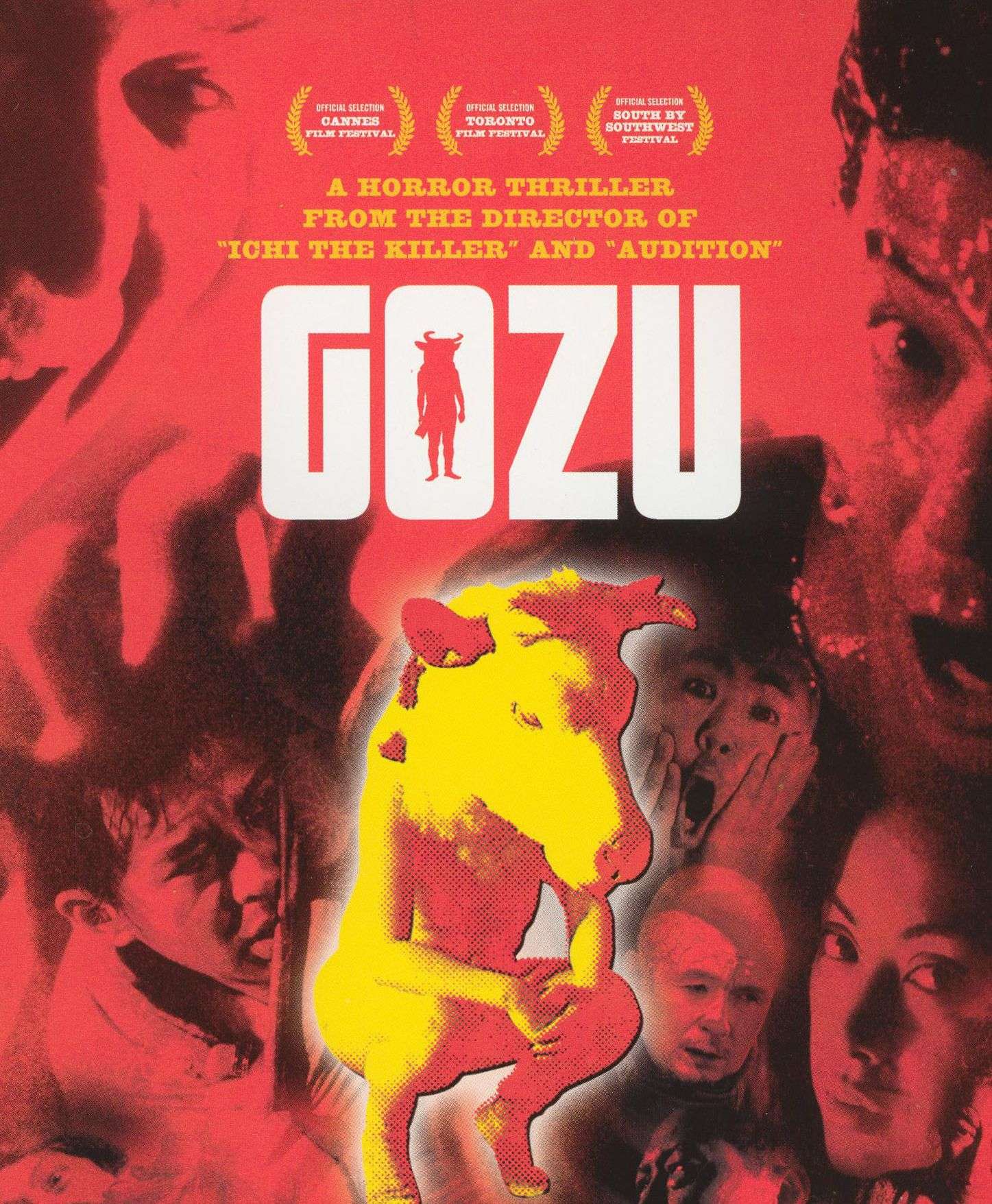
Minami is a member of the infamous Yakuza clan and has been ordered to kill a senior colleague Ozaki. Minami is hesitant to do so because he owes Ozaki a debt of gratitude for saving his life in the past. Ozaki, on the other hand, has just gone insane and has become a liability for the group.
Minami has no choice but to heed the leader’s demands because he wants him dead. However, when the body vanishes under inexplicable circumstances, Ozaki finds himself in a bizarre and terrifying situation. His fate is in the balance, and the bizarre voyage will reveal all.
Takashi Miike has gone on record to say that the works of David Cronenberg, Paul Verhoeven, and Akira Kurosawa have inspired him. In this movie, you can actually observe this influence in some of the scenes. This outstanding psychodrama is a realistic portrayal of fear and anxiety, with dilemma of the protagonist forcing him to act against his will.
The dark humor is subtle, but it is amusing to watch a serious story with such comedic breaks. The narrative is backed by some fine performances, and the surreal bits are enough to give Freud a headache! The music is perfectly suited for the plot, and the creepy ending song will break your heart.
Even if you are a seasoned fan of such movies, the climactic twist will leave you in shock. The only possible flaw in this terrific work of art is the duration, which could have been shortened a bit. However, you won’t exactly be checking your watch during the thrill ride that unfolds before your eyes!
Dead or Alive (1999)

Jojima is a tenacious detective on the trail of the legendary Japanese mafia. A Chinese gang is at odds with its Japanese equivalent as they aim to establish their underworld dominance and dominate the narcotics trade from Taiwan.
Detective Jojima stands between the two gangs and victory as they fight it out. The confrontation eventually takes on a personal tone, and it all comes down to a final fight!
Dead or Alive is certainly one of Miike’s most enjoyable and fun movies, and will likely leave you speechless. The movie features a thrilling opening sequence, though after the breathtaking first ten minutes, the plot settles down into a conventional crime story, before reverting to something more berserk at the end.
The personal troubles of the heroic cop add to the complexity of the plot, and the underworld politics make for an intriguing watch. You will find the director’s signature style here in some of the perverse elements in the movie, such as the scene where a gangster kills a girl by drowning her in a pool of her own poop.
Dead or Alive is cinematically stunning, showcasing long shots with few cuts, which add to the glorious visual experience. The violence is often cartoonish, but the brutality is hard to miss. As in all his works, the director doesn’t forget symbolism, and we supremely enjoyed the open moral questions Miike posed through the actions of the characters.
His harsh storytelling methods are at work once more, and the squeamish can go watch a Disney princess movie instead!
The Happiness of the Katakuris (2001)
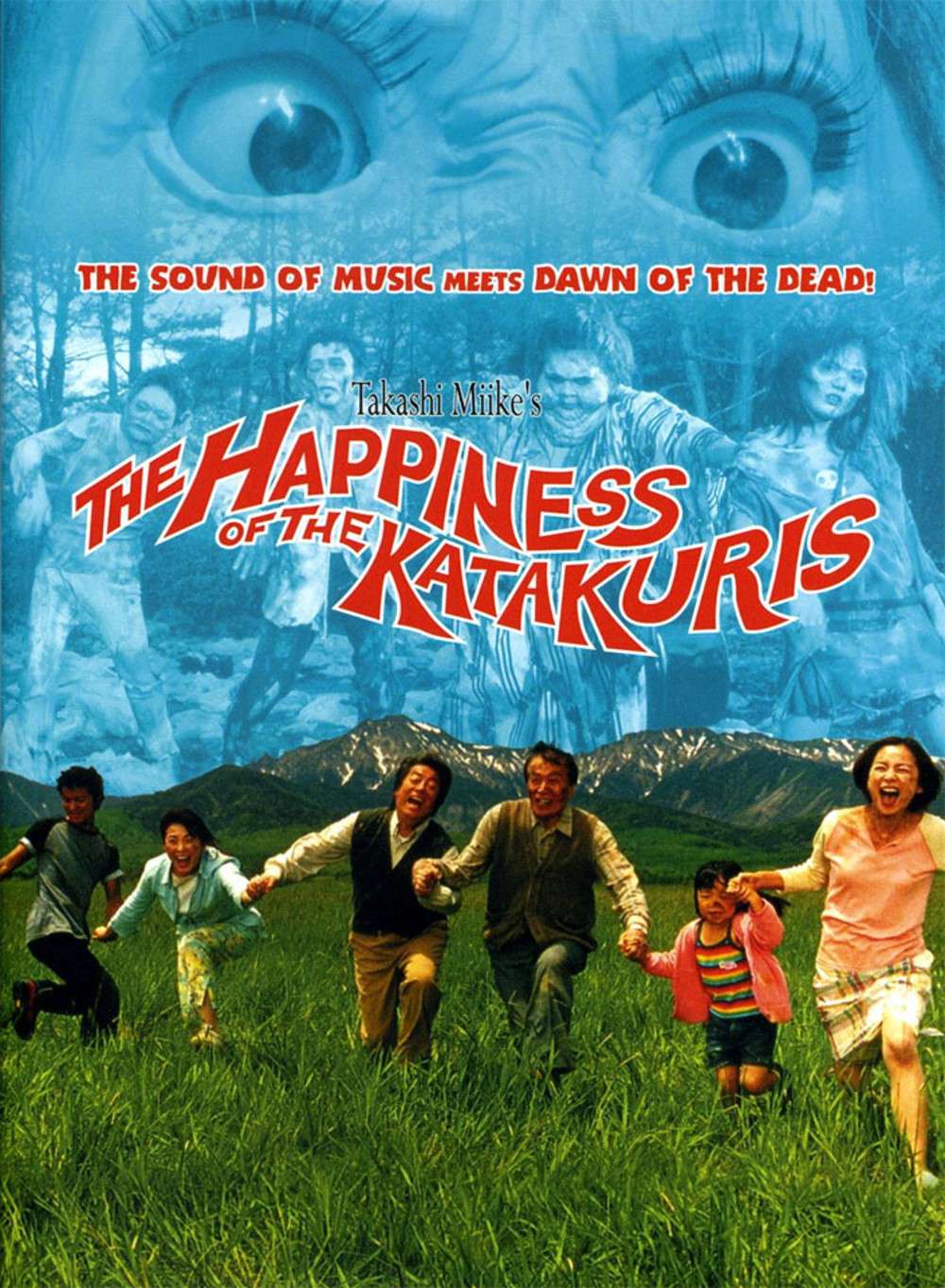
For years, the Katakuri family had a history of failures, and they eventually relocated to a lonely spot in the middle of nowhere. They decide to open a guest house after learning that a major road would be built through the area, in the hopes of generating some revenue.
When the clients begin to arrive, however, each one appears to perish under unexplained circumstances. The family burys the remains in the backyard in the hopes of avoiding difficulty, but the bodies continue to pile up. What is the secret of the Katakuri family’s happiness and the mystery of their deaths?
The plot is loosely based on a Korean film called The Quiet Family, but the idea to make it into a creepy musical is completely original. The absurd mix of horror, black comedy, andmusical makes this a unique project.
The use of claymation is smartly done, a decision which helped in dealing with the low budget. Even though zombies appear a short way into the movie, the violence is never overdone. In fact, the zombies are seen for just a couple of scenes before the story strays away from that aspect.
The actors, particularly those who play the Katakuris, were rather good, and they held up their end of the bargain even throughout the ludicrous musical numbers. This is by certainly one of the most entertaining horror films we’ve ever seen, as it’s a satire on the entire musical genre.
You’ll burst out laughing at the instances where the actors break into a random song after something bad happened. The only slight flaw in the film is its sluggish pace. However, we see no reason to miss out on this cheerful and uncanny horror musical that promises a wonderful time for the viewer!
